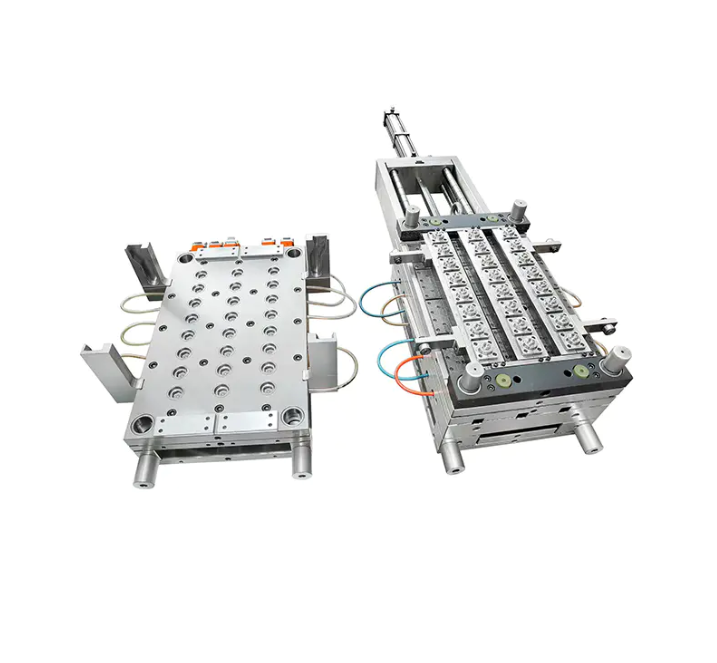chuangzhen@capping-machine.net

EN
In the evolving landscape of manufacturing technology, the Cap Compression Machine has become a symbol of digital precision and production efficiency. By integrating computer-assisted systems, data-driven calibration, and automated process control, it has transformed bottle cap manufacturing—reducing waste, improving consistency, and enabling producers to meet the growing global demand for advanced packaging solutions.

At the heart of digital precision lies the synchronization between mechanical design and intelligent control systems. Unlike earlier generations of equipment that relied heavily on manual monitoring, today’s compression systems are equipped with smart sensors capable of analyzing parameters such as pressure, temperature, and molding time in real time. Operators can maintain strict uniformity across production batches, which is critical in industries like beverage packaging, pharmaceuticals, and household goods, where precision at every millimeter matters.
Automation has redefined how compression molding functions. Machines equipped with servo motors and programmable logic controllers (PLCs) can instantly adjust based on digital feedback. For instance, if a temperature deviation is detected, the system automatically recalibrates to maintain material flow. This minimizes human error while ensuring energy efficiency through optimized heat cycles and material usage—two essential aspects of environmentally responsible manufacturing.
Today’s digital compression systems are designed using simulation software that predicts how polymers will perform under specific conditions. Engineers employ digital twins—virtual replicas of physical machines—to test cap designs before production begins. This predictive capability shortens the trial-and-error phase, accelerates product development, and extends tooling life. By combining mechanical precision with computational foresight, manufacturers can improve yield and enhance surface finish quality.
Digitalization also enables real-time tracking across the entire production chain. Every cycle can be recorded, analyzed, and compared to build predictive maintenance programs. When connected to Industrial Internet of Things (IIoT) platforms, the machine communicates with other factory systems, reporting performance metrics that help management optimize scheduling and raw material use. This level of connectivity enables a true smart-factory environment where operational decisions are guided by data.
Material science plays a vital role in supporting digital precision. Modern polymer formulations designed for compression molding offer improved melt flow and thermal stability, allowing machines to operate faster while maintaining accuracy. This balance between cycle time and cap quality enhances productivity and material efficiency. Moreover, the growing use of recycled and bio-based plastics within compression molding aligns with global sustainability goals.
In the near future, artificial intelligence is expected to advance compression molding even further. Machine learning algorithms can analyze historical performance data to predict ideal process parameters for specific materials and cap types. This adaptive intelligence improves productivity and minimizes downtime by identifying potential mechanical wear or variations in quality before they occur.
Another area of innovation is modular machine design. Manufacturers are developing systems that can be reconfigured quickly to minimize idle time while producing different cap types. This flexibility supports diversified production lines and meets the increasing demand for varied packaging formats.
As the industry continues to evolve, companies embracing digital transformation are setting new benchmarks for excellence. Taizhou Chuangzhen Machinery is one such innovator, offering advanced compression systems that combine precision, energy efficiency, and intelligent design. By integrating cutting-edge automation and control technologies, the company ensures each system delivers consistent performance and long-term reliability across global manufacturing environments.
Energy efficiency has also become a defining feature of the Cap Compression Machine. One major improvement lies in optimized heating and cooling systems. Traditional processes often relied on continuous thermal cycling, consuming significant power. Modern systems integrate smart temperature management, using sensors and adaptive controllers to maintain ideal thermal balance throughout production. By minimizing unnecessary heat loss and recovering excess energy, these systems save electricity while ensuring smoother operation.
Servo-driven technology is another key advancement. Replacing traditional hydraulic systems with servo motors enhances motion precision while reducing energy consumption. Each motor operates only when necessary, minimizing idle energy use. This precise control not only improves efficiency but also contributes to a cleaner production environment, reducing noise and maintenance requirements while enhancing overall sustainability.
Material optimization further strengthens eco-friendly production. Advanced polymer engineering enables the use of lightweight, recyclable materials that maintain durability under compression. This reduces the amount of raw material needed per cap, cutting waste and cost. With advanced digital control managing material flow, each cap is molded with uniform thickness and shape, preventing overproduction and reducing scrap loss.
Automation and data-driven insights further improve energy management. Modern compression systems are integrated with plant-wide monitoring platforms that track energy usage, output, and maintenance needs in real time. Predictive maintenance algorithms identify early signs of wear or imbalance, helping prevent energy loss due to mechanical inefficiencies or unplanned downtime.
Recycling and reprocessing are also increasingly integrated into compression molding. Manufacturers now implement closed-loop systems to reclaim and reuse excess polymer material without compromising quality. This approach not only conserves the energy needed for new material production but also supports circular manufacturing aligned with global environmental standards.
Smart manufacturing technologies have enhanced transparency and accountability. Digital dashboards display detailed metrics such as energy consumption, throughput, and thermal efficiency. Managers can use these insights to set measurable sustainability goals and drive continuous improvement. Over time, this data-centric culture fosters innovation and energy awareness across production teams.
Beyond hardware and software improvements, sustainable manufacturing now extends to plant infrastructure. Energy-efficient compressors, LED lighting, and advanced insulation materials further enhance system performance. This holistic approach ensures that machine-level energy efficiency is fully supported by the production environment.
Taizhou Chuangzhen Machinery continues to this transformation by developing compression equipment that integrates digital precision with environmental responsibility. Each system is designed to maximize output while minimizing energy input, helping manufacturers achieve modern sustainability goals without compromising productivity.
Copyright © Taizhou Chuangzhen Machinery Manufacturing Co., Ltd. All Rights Reserved.
